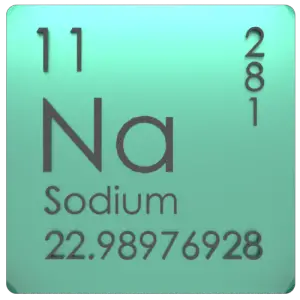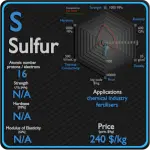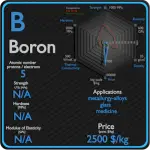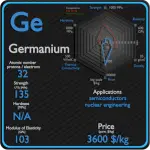This article contains comparison of key thermal and atomic properties of sodium and silicon, two comparable chemical elements from the periodic table. It also contains basic descriptions and applications of both elements. Sodium vs Silicon.
![]()
Sodium and Silicon – About Elements

![]()
Source: www.luciteria.com
Sodium and Silicon – Applications
Sodium
Metallic sodium is used mainly for the production of sodium borohydride, sodium azide, indigo, and triphenylphosphine. A once-common use was the making of tetraethyllead and titanium metal; because of the move away from TEL and new titanium production methods. An electric current and sodium vapor combine to form a yellowish glow. This principle is used for the making of sodium vapor lamps. Sodium is occasionally used as a heat exchange medium in nuclear power plants. Liquid sodium is sealed into pipes surrounding the reactor core. Generated heat is absorbed by sodium and forced through the pipes in a heat exchanger which can be used to generate electricity.
Silicon
Most silicon is used industrially without being purified, and indeed, often with comparatively little processing from its natural form. Silicon is a vital ingredient in aluminum, steel, and iron alloys. It is added as a fluxing agent for copper alloys. In the form of clay and sand, it is used to manufacture bricks and concrete; it is a valuable refractory material for high-temperature work, for example, molding sands for castings in foundry applications. Silica is used to make fire brick, a type of ceramic. Silicate minerals are also in whiteware ceramics, an important class of products usually containing various types of fired clay minerals (natural aluminium phyllosilicates). An example is porcelain, which is based on the silicate mineral kaolinite. Traditional glass (silica-based soda-lime glass) also functions in many of the same ways, and also is used for windows and containers. Hyperpure silicon metal and doped hyperpure silicon (doping with boron, phosphorous, gallium, or arsenic) are used in solar cells, transistors and semiconductors.
Sodium and Silicon – Comparison in Table
| Element | Sodium | Silicon |
| Density | 0.968 g/cm3 | 2.33 g/cm3 |
| Ultimate Tensile Strength | N/A | 170 MPa |
| Yield Strength | N/A | 165 MPa |
| Young’s Modulus of Elasticity | 10 GPa | 150 GPa |
| Mohs Scale | 0.4 | 7 |
| Brinell Hardness | 0.69 MPa | 2300 MPa |
| Vickers Hardness | N/A | N/A |
| Melting Point | 97.8 °C | 1410 °C |
| Boiling Point | 883 °C | 3265 °C |
| Thermal Conductivity | 141 W/mK | 148 W/mK |
| Thermal Expansion Coefficient | 71 µm/mK | N/A |
| Specific Heat | 1.23 J/g K | 0.71 J/g K |
| Heat of Fusion | 2.598 kJ/mol | 50.55 kJ/mol |
| Heat of Vaporization | 96.96 kJ/mol | 384.22 kJ/mol |













